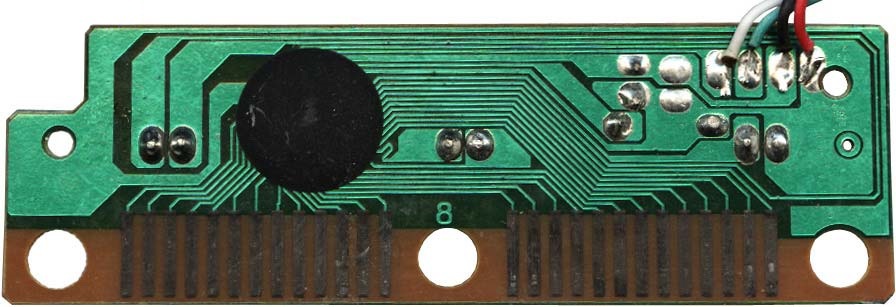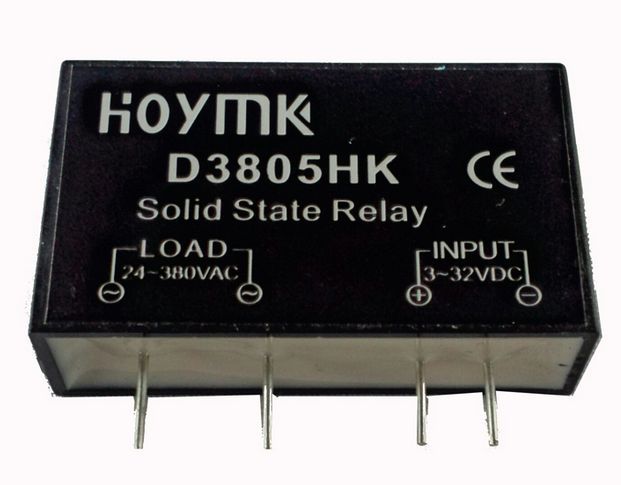Keyboard-controlled outlet, almost free and very simple
- Tutorial
There is acoustics in my household, many of the well-known Microlab firms, Solo 7, have good acoustics. At one time, she opened my ears. But I have long been thinking how can I automate the inclusion (disconnection) of acoustics. And finally I did it, everything turned out to be quite simple and convenient.
Strained several points:
- in this model there is no automatic power off, in the absence of a signal;
- the switch is located behind the lead column in the lower right corner, that is, to turn on (turn off) you will have to do an acrobatic exercise;
- when the computer is turned off, a quiet background noise is heard, it is heard only at night, it is a little annoying.
While making an internet radio for the kitchen based on CyberWRT , I saw a load management module"HID Switch" .
The operation scheme of which is quite simple, by connecting a USB keyboard (a control board with a wire is enough), you can control the LEDs acting as NumLock, CapsLock, ScrollLock indicators, and by connecting a solid-state relay or an optocoupler with a triac, you can control payloads.
But a router with CyberWRT will not be used here. We will connect the controller from the keyboard to the computer, as the second “keyboard”, and we will manage the loads from the main working keyboard.
Having bought a keyboard filled with liquid for a penny, I took out a control board, the

case with the keys, by the way, was also useful, this is now the “computer” of my little daughter.
During the experiments, it turned out that when the second keyboard is connected to the computer, the indicators are duplicated, that is, which indicators are lit on one keyboard, the same are lit on the other, which is quite logical.
And so, replacing the LEDs with a solid state relay,

(this can be bought for $ 2 on aliexpress)
we have three control channels, two disabled by default, these are CapsLock and ScrollLock, they do not turn on when the computer is turned on, the status of the NumLock indicator can be controlled in the BIOS settings, that is, it can be either turned on by default or turned off, which is quite convenient if For example, you need the same speaker system by default, but sometimes you can turn it off. And we control the connected peripherals from the keyboard, as it is not trite with the NumLock, CapsLock and ScrollLock keys, if using the first two can cause discomfort when working with text or a numeric keypad.
I drew a sketch of the connection, maybe someone will come in handy.
Let me remind you that the voltage of 220 V is dangerous for life and health, and if you do not have sufficient skills, it is better not to risk it. Also, an improper connection can damage your computer.
After connecting all the wires, isolate the keyboard controller board, for example with adhesive tape in several layers, in order to eliminate troubles.

Use cases are limited only by your imagination.
I currently have only one ScrollLock channel enabled, it controls the power of the speaker system and the printer. It is assembled in the housing of the outlet for outdoor installation, from which two wires come out, a wire with a 220V plug and a USB cable.
There is one caveat, when you boot the computer for a second, all indicators light up, which may be unacceptable. I solved this problem by plugging the cable into the USB 3.0 socket.
Using such a system allows me to turn on the acoustics when I need it by pressing ScrollLock, by default it is turned off, when the computer is turned off or in sleep, the acoustics are turned off.
Strained several points:
- in this model there is no automatic power off, in the absence of a signal;
- the switch is located behind the lead column in the lower right corner, that is, to turn on (turn off) you will have to do an acrobatic exercise;
- when the computer is turned off, a quiet background noise is heard, it is heard only at night, it is a little annoying.
While making an internet radio for the kitchen based on CyberWRT , I saw a load management module"HID Switch" .
The operation scheme of which is quite simple, by connecting a USB keyboard (a control board with a wire is enough), you can control the LEDs acting as NumLock, CapsLock, ScrollLock indicators, and by connecting a solid-state relay or an optocoupler with a triac, you can control payloads.
But a router with CyberWRT will not be used here. We will connect the controller from the keyboard to the computer, as the second “keyboard”, and we will manage the loads from the main working keyboard.
Having bought a keyboard filled with liquid for a penny, I took out a control board, the

case with the keys, by the way, was also useful, this is now the “computer” of my little daughter.
During the experiments, it turned out that when the second keyboard is connected to the computer, the indicators are duplicated, that is, which indicators are lit on one keyboard, the same are lit on the other, which is quite logical.
And so, replacing the LEDs with a solid state relay,

(this can be bought for $ 2 on aliexpress)
we have three control channels, two disabled by default, these are CapsLock and ScrollLock, they do not turn on when the computer is turned on, the status of the NumLock indicator can be controlled in the BIOS settings, that is, it can be either turned on by default or turned off, which is quite convenient if For example, you need the same speaker system by default, but sometimes you can turn it off. And we control the connected peripherals from the keyboard, as it is not trite with the NumLock, CapsLock and ScrollLock keys, if using the first two can cause discomfort when working with text or a numeric keypad.
I drew a sketch of the connection, maybe someone will come in handy.
Let me remind you that the voltage of 220 V is dangerous for life and health, and if you do not have sufficient skills, it is better not to risk it. Also, an improper connection can damage your computer.
After connecting all the wires, isolate the keyboard controller board, for example with adhesive tape in several layers, in order to eliminate troubles.

Use cases are limited only by your imagination.
I currently have only one ScrollLock channel enabled, it controls the power of the speaker system and the printer. It is assembled in the housing of the outlet for outdoor installation, from which two wires come out, a wire with a 220V plug and a USB cable.
There is one caveat, when you boot the computer for a second, all indicators light up, which may be unacceptable. I solved this problem by plugging the cable into the USB 3.0 socket.
Using such a system allows me to turn on the acoustics when I need it by pressing ScrollLock, by default it is turned off, when the computer is turned off or in sleep, the acoustics are turned off.
